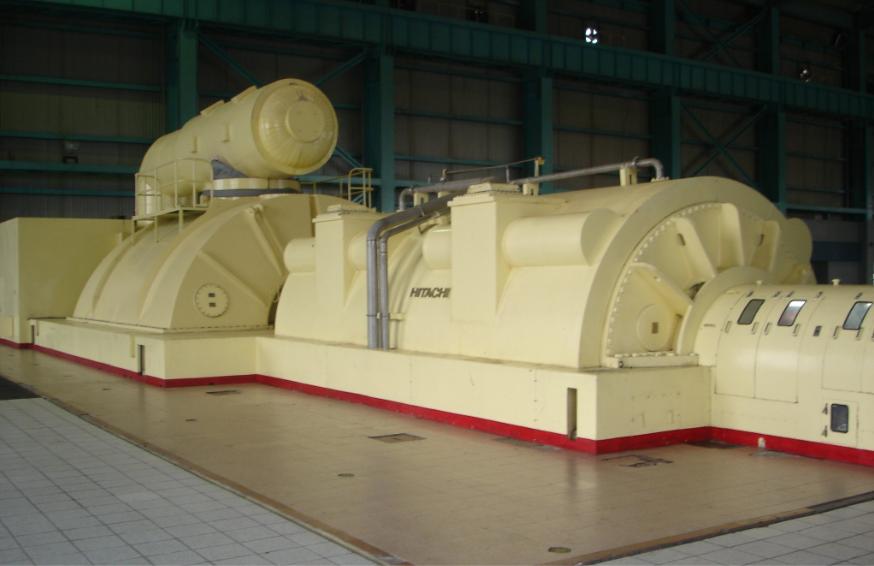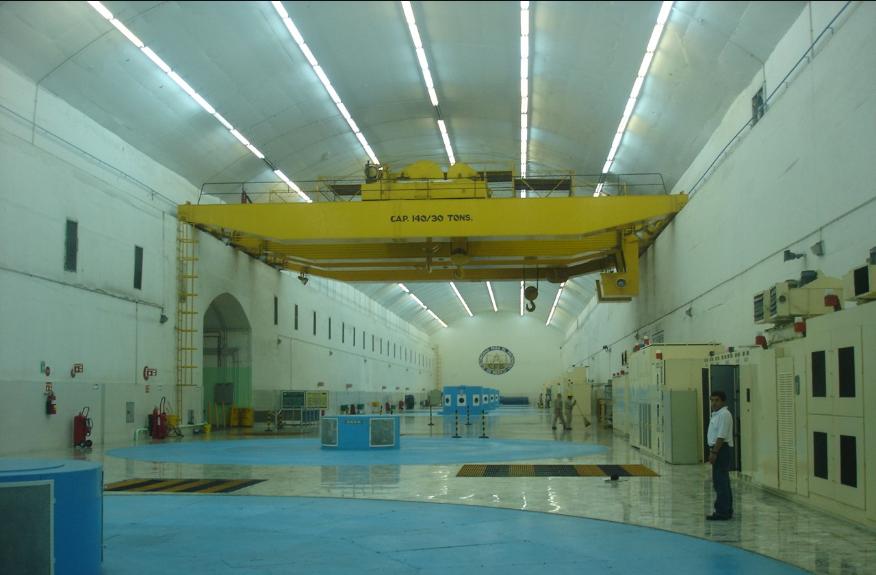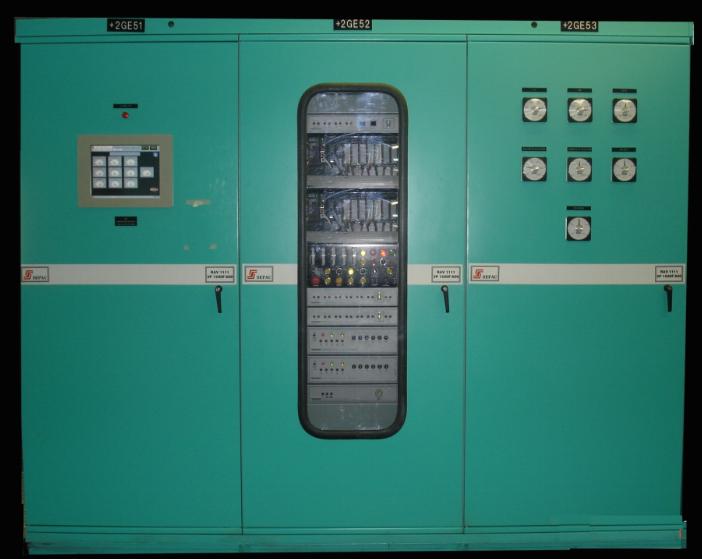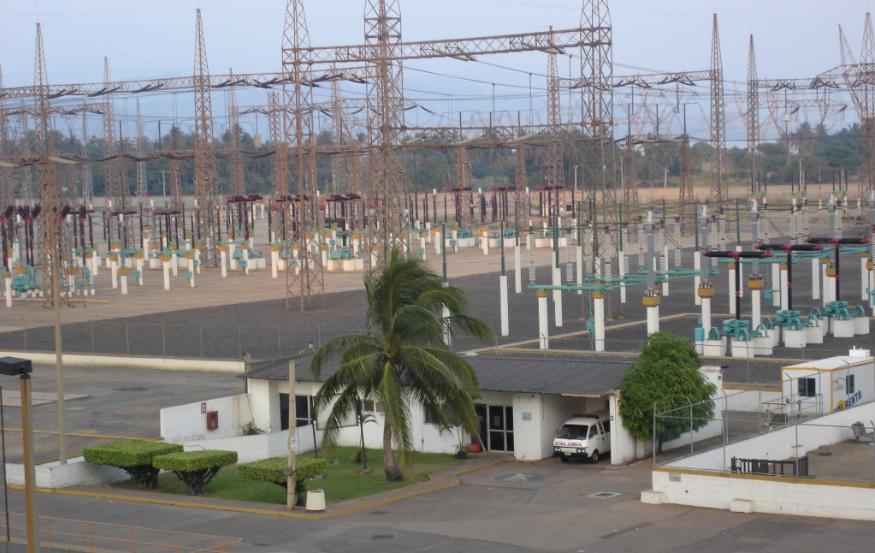Consolas de operación
- Consolas
- SCADAPAC
- Expopac
- Sisipac
- Simpac PMSS
CONSOLAS PARA SISTEMAS SCADA
SCADAPAC XAR2-D
SCADAPAC XAR4-D
CONSOLAS PARA SISTEMAS DE AUTOMATIZACION
SIMPAC XAR2-S
SIMPAC XAR2-D
CONSOLAS DE INGENIERIA
SIMPAC SISIPAC
SIMPAC PMSS
SOFWARE EXPOPAC
SCADAPAC XAR4-DE
El sistema de control supervisorio SCADAPAC XAR4-DE
es un sistema SCADA con programas de aplicación del tipo
DISTRIBUTION MANAGEMENT SYSTEM que esta
diseñado en una plataforma que permite poder migrar el
equipo desde un sistema SCADA tradicional hasta un centro
de despacho de tipo regional.
La arquitectura basica consta de 2 servidores que realizan
las funciones de control y adquisicion de datos y funcion de
servidor de historicos donde en varios discos se almacena la
informacion historica del sistema.
El sistema basico cuenta con 2 terminales de operación
dedicadas al despliegue de la IHM del sistema y la
funciones de control y operación de la red de distribucion o
transmision.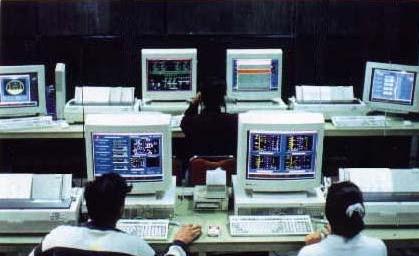
Las funciones de comunicación estan cubiertas por un
Controlador Inteligente de Comunicaciones ( CIC XAR2-
6)capaz de manejar hasta 32 canales de comunicación
utilizando diferente protocolo en cada uno.
El sistema tiene la capacidad de manejar hasta 8 servidores
de sistema , 32 terminales de operación , ya sean estas
locales o remotas y dos controladores de comunicación
operando en espejo para asegurar las funciones de
redundancia.
La comunicación entre servidores, terminales de
comunicación y Front-Ends ( CIC XAR2-6 ) se realiza
mediante redes lan redundantes a 10 Mps o superior según
sean los requerimientos del usuario.
Cabe mecionar que el sistema puede crecer desde una
estructura basica basada en dos servers hasta una
configuracion en donde se distribuyen funciones como
bases de datos y tareas de adquisicion de datos en diferentes
equipos del sistema contando ya con varias terminales de
operación para diferentes propositos.
ARQUITECTURA DE SOFTWARE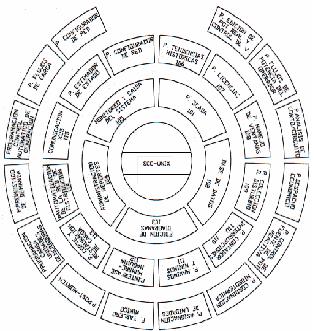
La arquitectura de software del sistema SCADAPAC
XAR4-DE se basa en cuatro capas :
CAPA No 1
La primer capa se compone del sistema operativo , que en el
caso de los servidores es UNIX y en el caso de las consolas
de operación o de las consolas remotas, el sistema
operativo propuesto puede ser WINDOWS-NT O UNIX.
En este mismo nivel se encuentra la base de datos relacional
del sistema , ORACLE 8 , por medio de la cual se maneja
todo la informacion historica y estadistica del sistema
compartiendo recursos en coordinacion con la base de
datos de tiempo real con interacciones SQL.
El sistema SCADAPAC XAR4-DE hace uso de la
plataforma de software RTAP de HEWLETT PACKARD
para fines de herramientas de configuracion de la interfase
grafica del sistema.
RTAP (REAL TIME APPLICATION PLATFORM) provee
una serie de herramientas que proporcionan al usuario del
sistema la facilidad de personalizar y configurar su
ambiente grafico de trabajo de una forma muy sencilla y
haciendo uso de toda la capacidad del sistema operativo y
base de datos relcional.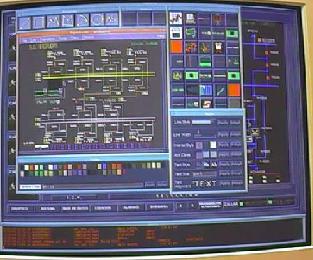
Las herramientas proporcionadas por RTAP son :
-EDICION DE BASE DE DATOS
-CREADOR DE DIAGRAMAS
-CREADOR DE PANELES
-SERVIDOR Y ADMINISTRADOR DE REPORTES
-CREADOR Y SERVIDOR DE GRAFICOS
-PROGRAMADOR DE TAREAS
-ADMINISTRADOR DE RECURSOS
-SCAN TASKS ( OPCIONAL ).
La interaccion entre el sistema operativo , la base de datos
relacional y el RTAP se hace por medio de programacion en C++ y herramientas de SQL.
La segunda capa del sistema SCADAPAC esta constituida
por el software basico SCADAPAC-UX 2000 .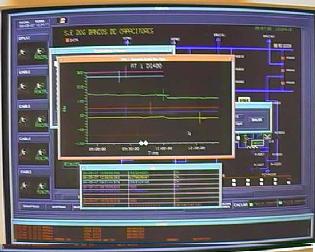
En este nivel el sistema posee una serie de modulos de
software que conforman la estructura principal de un
sistema de control supervisorio :
-SERVIDOR DE BASE DE DATOS
-SERVIDOR SCADA
-EDITOR DE PANELES
-EDITOR DE ESQUEMATICOS
ETC..
CAPA No 3
La tercera capa del sistema engloba todos los modulos de
software encargados de la configuracion y personalizacion
del sistema.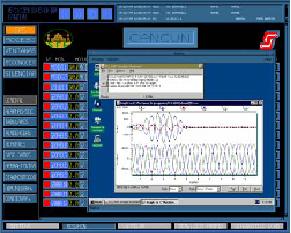
Por medio de estos el usuario tiene la capacidad de
configuracion de IHM, programacion de funciones ,
Administracion de recursos actualizacion de funciones del
sistema:
-MONITOREO Y CAIDA DEL SISTEMA
-TENDENCIAS HISTORICAS
-ANALISIS POST MORTEM
-REGISTRO HISTORICO
-ADMINISTRACION DE LIBRANZAS
-BITACORAS DE OPERACIÓN
-MAXIMOS Y MINIMOS
-NIVELES DE ACCESO
ETC...
CAPA No 4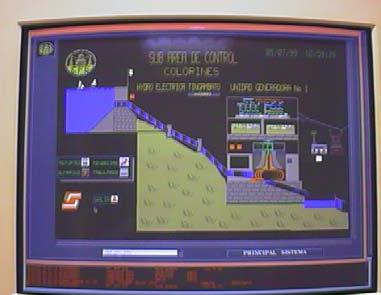
Este nivel de programacion del sistema se caracteriza por
englobar todos los modulos de software que representan
programas de aplicación de los sistemas de control
supervisorio.
Hasta la CAPA No 3 el sistema SCADAPAC XAR4-DE es
un sistema scada tradicional, según los requerimientos se
adicionana al sistema uno o varios modulos de la capa 4
hasta que el equipo cumpla con las necesidades de la red
electrica.
Entre los programas de aplicación disponibles para el sistema de control supervisorio SCADAPAC XAR4-DE se pueden mencionar los siguientes:
-CONTROL AUTOMATICO DE GENERACION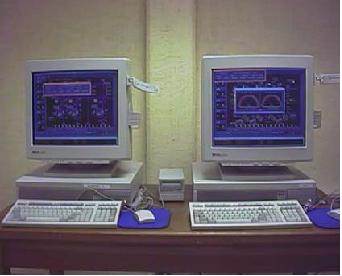
-LOCALIZACION DE FALLAS EN LINEA
-FLUJO DE CARGAS
-INDICES DE GESTION
-PRONOSTICO DE DEMANDA
-ANALISIS DE TOPOLOGIA DE RED
-ESTIMADOR DE ESTADO
-DESPACHO ECONOMICO
-ANALISIS DE FALLAS, OSCILOGRAFIAS.
-AUTOMATIZACION DE REDES
-CORTE Y RESTAURACION DE CARGAS
-ETC...
CONTROLADOR INTELIGENTE DE
COMUNICACIONES CIC XAR2/6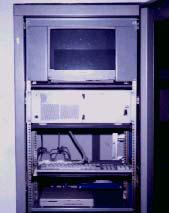
El sistema SCADAPAC XAR4-DE cuenta con uno, dos o
tres controladores de comunicación que realiza todas las
funciones de adquisicion de datos.
Estos “Front End” del sistema se interconectan por medio
de las redes lan del equipo a los servidores y terminales de
operación.
El CIC XAR2-6 esta basado en computadoras industriales
MOTOROLA COMPUTER GROUP , cuenta con una
interfase grafica basada en sistema operativo WINDOWSNT.
Este servidor de comunicaciones tiene la capacidad de
interfazarse hasta con 2 redes Lan de 10/100 MPS y puede
manejar hasta 32 canales de comunicación redundantes
utilizando diferente protocolo de comunicación en cada uno.
Los protocolos de comunicación disponibles para este equipo son:
-HARRIS 5000/6000 ACS-3100
-L&N TRW
-FUJI DNP 3.0
-INDACTIC 33 IEC 870-5
-WESTON ETC...
-ICCP
INTERFASE HOMBRE MAQUINA .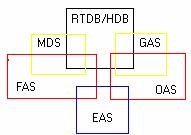
Por medio de los diferentes modulos de software se creo un
software de explotacion que delimita las funcionalidades de la
interfase hombre maquina dependiendo del personal que utilize la
interfase:
-personal de mantenimiento
-personal de control
-personal de subestaciones
-personal de comunicaciones
-operadores
Estos diferentes modos de operación engloban todas las funciones
requeridas por el sistema para su optima explotacion partiendo
desde las funciones basicas de proteccion y de sistemas scada
hasta las funciones de mayor complejidad como lo son el
tratamiento e importacion de la oscilografia de los DEI’S y el
ajuste de estos desde la alguna terminal.
Es importante mencionar que para cada uno de los niveles de
operacion el sistema cuenta con un modulo que permite el acceso
a las diferentes funciones mediante una clave de identificacion y
un password.
GUIA – OPERADOR (MODULO GAS)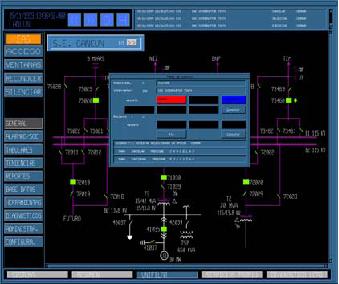
-diagramas unifilares
-cuadros de alarmas
-tabulares de indicaciones
-tabulares de mediciones
-reportes de alarmas
-reportes de fallas
-mandos
-manejo de libranzas operativas
ANALISIS DE RESULTADOS DE OPERACIÓN (MODULO
OAS).
-relatorios de eventos
-secuencia de eventos
-variables calculadas
-violacion de limites
-tendencias historicas
-bitacoras de operación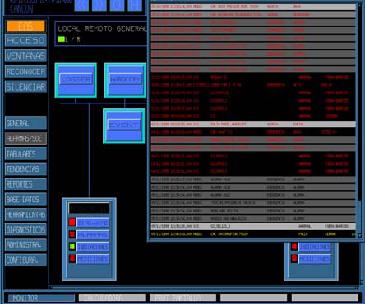
-mediciones horarias
-maximos y minimos
-cargas afectadas
-tiempos de interrupcion
-estadisticas de operación
-cargas desbalanceadas
-analisis de perdidas
-analisis de la calidad del servicio
-porcentaje de armonicas
-balances energeticos
-estimador de estado
-analisis de topologia
-despacho economico
etc ...
ANALISIS DE FALLAS (MODULO FAS)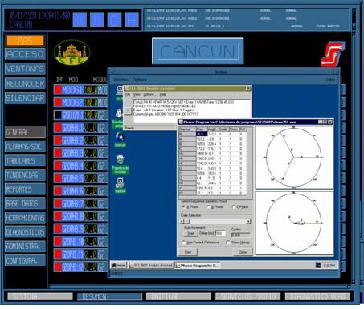
-diagramas trifilares
-diagramas de proteccion
-localizacion de fallas
-estadisticas de fallas
-oscilografia
-analisis post-mortem
-diagnostico y autodiagnostico de -relevadores
-edicion de secuencias logicas
-habilitacion de secuencias logicas
-impacto economico sobre -resultados de operación
ADMINISTRACION DEL MANTENIMIENTO
( MODULO MAS )
-estadisticas de operación
-estado actual de los equipos i2t
-calculo de vida util remanente
-caracteristicas de los equipos (base de datos)
-relatorios de los -mantenimientos efectuados
-planeacion del mantenimiento preventivo
-seguimiento de las libranzas
-programas anuales de -mantenimiento
-generacion de ordenes de trabajo
-resguardo de procedimientos de mantenimiento
-evaluacion del costo
del mantenimiento
EXPANSION Y ADMINISTRACION
( MODULO EAS )
– sinoptico del sistema
– configuracion de la base de datos
– ajuste de comunicaciones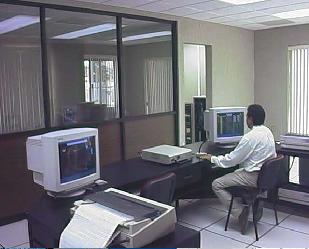
– estadisticas de comunicaciones
– relatorios de ajustes
– herramientas de diagnosticos
– reportes de auto diagnostico
– edicion de reportes
– herramientas para sincronizacion del tiempo
– configuracion de la funcion de submaestra
– configuracion del nivel superior
– instalacion de nuevos nodos en la lan
– configuracion de las conexiones a wan
Por medio de este agrupamiento de funciones según los diferentes
usuarios es posible dirigir la informacion especifica y de
conveniencia a cada grupo de usuarios mediante passwords
especificos para cada usuario.
APLICACIONES RELEVANTES
Por medio de este tipo de sistemas SEPAC ha tenido la
oportunidad de suministrar a C.F.E. 4 centros de despacho a
las Subareas de Transmision y Transformacion de
Colorines, Guanajuato, Frontera y Puebla.
Adicionalmente a la experiencia antes mencionada SEPAC
ha suministrado 8 sistemas SCADA/EMS para la division
Golfo Centro de Comision Federal de Electricidad entre
1996 y 1999.
Actualmente SEPAC esta suministrando e instalando un
sistema SCADAPAC XAR4-DE para guatemala que
consiste en el centro de Despacho de Carga de Guatemala
junto con la automatizacion de 4 centales hidroelectricas
( 16 Unidades de Generacion ) .
EXPOPAC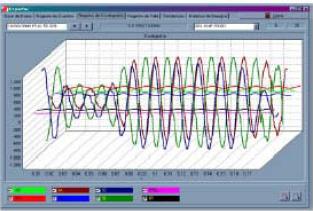
El software EXPOPAC concentra todos los datos en una base de datos única y presenta toda la información disponible de cualquier IED en el mismo formato para analizar las fallas y tener un mejor entendimiento del origen de las mismas.
Para lograr esto, la traducción de protocolos es realizada en cada relevador de cada marca a un protocolo predeterminado tal como el DNP3.0.
Las herramientas principales de esta aplicación son:
- Oscilografía
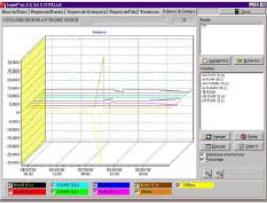
- Registro de fallas
- Grabador de eventos
- Balance de energía
- Graficación de datos
- Demandas de potencia
- Desbalanceo de cargas
Cueste lo que cueste el relevador o el medidor cualquiera que sea su marca, esta opción es completamente modificable para las necesidades de información requeridas.
Descarga de datos del IED pueden ser hechas configurando el disparo si cierta variable alcanza “x” valor y/o por programándolo en una base de tiempo y/o por requerimiento del usuario.
Algunas de las características principales de EXPOPAC son:
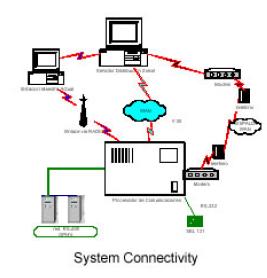
- Acceso y despliegue de cualquier IED en el mismo formato.
- Configuración remota del sistema.
- Intercambio de datos en formato FTP.
- Administración de eventos de los IED con grupo fecha/hora.
- Despliegue de oscligrafía después de fallas e históricamente.
- Registro de fallas, nombre del IED, tipo o falla, fase, duración, locación, voltajes y corrientes. Archivo histórico.
- Graficación de demanda de potencia, voltaje, corriente, frecuencia, etc.
- Cálculos de balance de energía por bus de subestación.
- Exportación de datos a MS Excel o programas similares.
- Exportación de oscilografía en formato COMPTRADE.
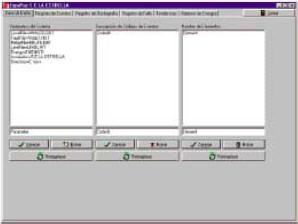
Despliegue de gráficas de cualquier variable del sistema. Gráficas simultáneas pueden ser desplegadas, y además despliegue de dos oscilografías de dos relevadores distintos pueden ser mostradas simultáneamente.
SIMPAC PMSS
1.- OVERVIEW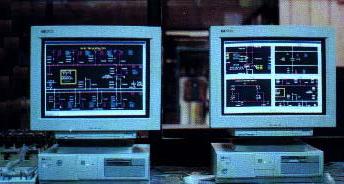
The SIMPAC PMSS protection terminal is based on a powerful workstation computer
that allocates all software necessary to monitor and control substation protection
systems.
Using a CIC™ (Intelligent Communications Controller or Front End Processor),
information is acquired from the IEDs and then transmitted locally and/or remotely to
the Protection Terminal. Local access is done typically using a LAN Ethernet.
The SIMPAC CIC’s communication capabilities allow for remote reliable access
through WAN, radio or other available means, it is loaded with software to access
Protection Relays. 4 ways of accessing are available:
1.- SCADA
2.- Through Port / OEM proprietary software
3.- EXPOPAC™ Software
4.- SAMPAC Optional
1.1.- SCADA:
The SCADA functions on this terminal allow acquiring and managing all Real Time
information that comes from the substation.
1.2.- THROUGH PORT / OEM
PROPRIETARY SOFTWARE
The Through Port function allows the user to access the protection Relay as if connecting
directly with a Laptop.
1.3.- EXPOPAC
The EXPOPAC software presents all the information available from any IED in the
same format.
1.4.- SAMPAC
SAMPAC is a Maintenance module developed by SEPAC to manage transformers
and breakers. This application comes as an option but it can be very useful in predictive
and preventive maintenance.
Protection Terminal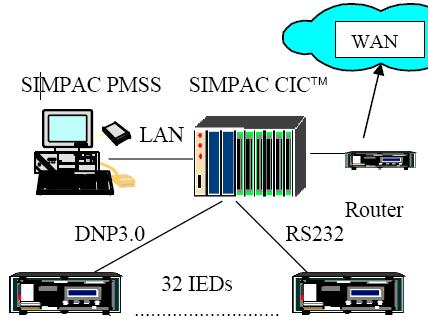
2.- TYPICAL ARCHITECTURE WAN
SIMPAC PMSS SIMPAC CIC
LAN
Router
DNP3.0 RS232
32 IEDs
The system can also be connected using RS- 485 links or by fiber optics.
In this architecture, the CIC becomes the heart of the system. It has the capability of
managing up to 32 independent channels. Each channel can handle a different
communications protocol, thus making it possible to access different brands of
Protection Relays.
Another option for the basic architecture is building different communication networks.
Each Network has a different communication protocol and IEDs with the same protocol can
be connected on the same network.
The CIC is also capable of accepting legacy RTUs if necessary in order to acquire digital
I/O information for monitoring functions.
SIMPAC PMSS SIMPAC CIC IEDs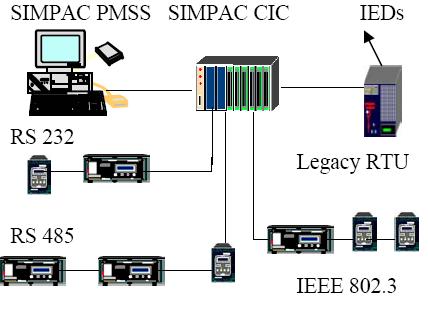
RS 232
Legacy RTU
RS 485
IEEE 802.3
Depending on the IEDs individual connectivity capabilities, equipment from the
same OEM can be in a single network or on different networks to optimize response time.
Depending on the user’s specification, either array is possible. The system’s flexibility is
an advantage for the user, for he can choose the most convenient way of connecting the
devices.
WAN
3- HARDWARE
3.1 – WORKSTATION
The main computer used for the SIMPAC PMSS Terminal is based on dual Pentium III
processors @ 1.2 GHz, two SCSI hard drives and 1GB RAM.
As new improved hardware is available, the Protection Terminal will move to the most
recent version of the equivalent hardware.
3.2 – SIMPAC CIC™
The broad range of processor modules, RAM memory, storage capacity and
communication capabilities make a SIMPAC PMSS capable of controlling from just a few
IEDs to dozens of IEDs. With the addition of several SIMPAC PMSS working together as
distributed units can make it possible to control hundreds of IEDs.
CPU i486 @ 66 or 100 MHz
4 MB to 64 MB RAM
2 MB to 128 MB Flash Disk
RS-232 Maintenance port
RS-232/422/485 Interconnect port
Ethernet Interconnect port
PC-104 BUS.
A typical CIC configuration could be: • RS-232/422/485 electrical interface levels on all channels
• Asynchronous mode supported with:
• 5-, 6-, 7- or 8-bit character lengths
• Even, odd, or no parity generation and checking
• 1, 1 1 /2 or 2 stop bits per character
• Break, overrun and framing error detection
• Data rates to 115K bps
• Byte oriented synchronous
capabilities:
• Internal or external character
synchronization
• Automatic CRC
generation/checking
• SDLC/HDLC capabilities:
• Abort sequence generation and
checking
• Automatic zero insertion and
detection
• Automatic flag insertion between
messages
• Address field recognition
• I field residue handling
• CRC generation/handling
• SDLC loop mode with EOP
recognition/loop
• entry and exit
• Z85230 Enhanced SCC for
improved performance
• 4 byte transmit and 8 byte receive
FIFO
• Configurable as DTE or DCE
• Operating temperature: -40 oC to +85 oC
The CIC is configured and built to each system’s specific needs or user requirements,
using plug-and-play boards, each with two serial ports.
4 – SOFTWARE ARCHITECTURE
The system runs either under UNIX for real time applications and WINDOWS for other
applications.
The programming structure of the software is divided into three blocks.
Each of these blocks represents the application and function level of each software module that comprises the entire
SIMPAC PMSS.
The system’s philosophy comprises different programming modules that act independently
and perform their links to the rest of the system through a relational database and the
different routines on the operative system.
THE THREE BLOCKS ARE:
a) The first block of the system constitutes the basic programming modules, fundamental
for the system’s operation.
-database
-communication module
-diagram editor
-function and report management
-system monitoring
b)The second block comprises the manmachine interface configuration.
-diagram creation
-report creation
-panel creation
-screen personalization
-function personalization
-logger management
-trend and statistics management
c) The third and last block of the system, is comprised by the applications that personalize and are specific to the system involved:
• SCADA
• THROUGH-PORT / OEM
PROPRIETARY SOFTWARE
• EXPOPAC
• SAMPAC
5- APPLICATIONS
5.1 SCADA
The SCADA applications run on a SCOUNIX
platform and are used for all real time
data management. These applications
include:
- Single Line Diagrams
- Registers
- Reports
- Commands
- SOE
- Password Access
This application runs on SCO-UNIX, it is totally user configurable, it has an
Intelligent Alarm feature, its programming and connectivity are based on open
standards, it has built-in DNP3.0, and supports a real time relational database.
The sequence of events has a 1-millisecond resolution.
Event display and acquisition is configurable by the user. Information can be acquired by exception, on a timely basis and/or by operator request. The information to be acquired is also configurable .
Different access levels can be configured, from system administrator with all functions
and capabilities to monitoring only privileges.
Typical configuration includes 5 access levels for 5 kinds of users.
5.2 THROUGHPORT / OEM PROPRIETARY SOFTWARE
This function allows users to connect and access the desired IED as if doing it directly
with a Laptop. The main applications are.
- IED Setting
- IED Monitoring and Diagnostics
- Oscillography
- Fault Register
- Event Register
- ThruPac
The system emulates the hyper terminal function and runs the licensed proprietary
OEM software for each relay. All IED manufacturer software features are
available from a local or remote location, this includes all characteristics listed above.
The ThruPac enables the user to have remote modem sessions with complete
functionality, enabling them to work from their offices and saving significant amounts
of time.
On the above example, a Windows session is loaded on Unix, to run the DIGSI software
and display a Siemens Relay data. The SCADA application is still running on the
background.
Setting adjustments, event register, metering, oscillography and all other information is
obtained using the through port. The above example is the demo oscillography
display for the SEL relays. All information is presented using the software developed for
this use by the OEMs.
5.3 EXPOPAC™
The ExpoPac software concentrates all data in a unique database and presents all the
information available from any IED in the same format. To achieve this, protocol
translations are performed on each relay of each brand to a predetermined protocol such
as DNP3.0.
The main tools of this application are: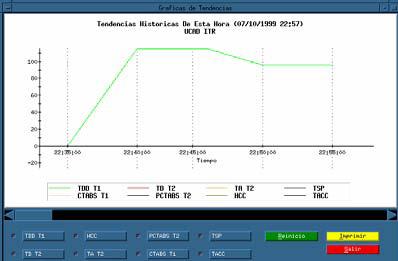
- Equipment Plate Data
- Oscillography
- Fault Register
- Event Recorder
- Energy Balance
- Trend Graphs
Regardless of the Relay or Meter brand, this option is completely customizable as to the
information that needs to be acquired. Downloads of IED data can be done by
setting a trigger if a certain variable reaches “x” value and/or by programming it on a
timely basis and/or by user request.
Some of the main features of ExpoPac are:
• Access and display of any IED on
the same format.
• Remote system configuration
• Data interchange on FTP format
• IED event management with time stamp, IED name, and event type
• Oscillography display, after faults and historically
• Fault registers, IED name, type of fault, phase, duration, location, voltages and currents. Has historical archive
• Trend graphs power demand, voltage, current, frequency, etc.
• Energy Balance calculations per substation bus.
• Load unbalance on transformer, line and feeder circuits.
• Data export to MS Excel or similar programs
• Oscillography data export in COMPTRADE format
Trend graph display of any chosen variable of the system. Simultaneous graphs can be displayed, i.e. voltage and current on phase
A.
5.4 SAMPAC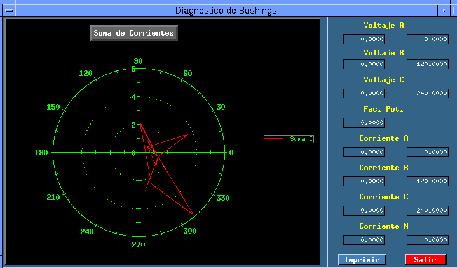
SEPAC has developed software for monitoring transformers and breakers.
These functions acquire information from the system’s database and instrumentation on
field to provide information on equipment status. This is a tool used for predictive and
preventive maintenance. It can print work orders and reports.
For transformers, besides the mandatory overload and over temperature cycles,
partial discharges, oil quality and bushings are monitored. Alarms and reports are
configurable according to user’s needs. For breakers, I²T is calculated. The system
is then configured to alarm and report
according to user’s specification or maintenance policies.
The above example is a bushing sum of currents polar graphic.
6- COMMUNICATION PROTOCOLS
Throughout the years, SEPAC has developed systems that comprise many different OEM’s
products and communication protocols. By integrating almost all known brands of
Meters, Protection Relays and other IEDs, SEPAC is able to communicate with most
known manufacturers such as:
• SIEMENS
• ALSTOM
• ABB
• BASLER
• SEL
• BECKWITH
• GENERAL ELECTRIC
• POWER MEASUREMENT
• ION
• ZIV
• KITRON
• HIDRAN
• RIS
Protocol Translation functions installed in the system make it possible to integrate all
devices from the different brands. Translation takes place in the Database and is mapped to
the table from which the system will report to the local interface or to the remote session.
This functionality allows to have several communication networks with a different
protocol on each one.
There are a great number of different communication protocols that can be used to
acquire information form a large source of IEDs and RTUs.
They can also be used to update information to other Master Stations or Dispatch Centers
using any of the standard or legacy SCADA protocols.
IED Protocols
• ACM3710
• ACM 3720
• TDPU
• OPH 3.0
• Mlink
• Dlink
• Curier
• DLS
• BECO 2200
• Quantum
• Slim
• SEL
• LFCB
Standard Protocols
• DNP 3.0
• ModBus
• ScadaPac V5.0
• IP
• UDP
• IEC 870/1-5
• TCP
Proprietary Interfaces
• SyLINK
• GE Fanuc
• Modbus Plus
SCADA Protocols
• Harris 5000/6000
• ACS 3100
• FUJI
• CDC
• Valmet Tejas
• Leeds & Northrup
• Indactic 33/41
• Weston II
• Quics II
• PCS IIE
• SCADA Consultant
7.- WAN CONNECTIVITY
The SIMPAC PMSS system has a WEB interface that allows connectivity to the
internet. Using this interface, information on the system can be displayed on a WEB
browser such as MS Explorer or Netscape.
The following software comprises the SIMPAC WEB interface:
1.- Apache HTML Server This module manages the HTML format
interface, system configuration and administration takes place in this module.
Reports and Historic data are handled through the HTML server.
2.- Tarantella Application Broker This modules allows for any screen on the
SIMPAC PMSS to be transported through a WEB browser and into the internet. It
allows for remote operation through the WEB provided a fast internet connection is
available. It is based on X-Windows / Java technology.
3.- Berkley Internet Name Domain (DMS) This module manages addresses and names

